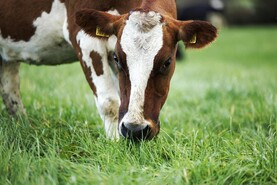Grassland management
Grass has become increasingly difficult to manage over the last week. The rate at which surplus grass is developing is reflected in growth rates recorded on the Teagasc BETTER farm sheep programme at an average of 67kg DM/ha/day with a range in growth rates from 47kg DM/ha/day to 112kg DM/ha/day. While average demand on the farms is 39kg DM/ha/day.
These growth rates are higher than typical growth rates on many farms but so too is the stocking rate on these farms, meaning the challenges faced in managing grass are similar for all. The high growth rates should be capitalised on to replenish forage reserves while removing surplus paddocks out of the rotation will bring the added benefit of helping to improve grass quality. At this stage of the year the target is to keep 10 days grazing ahead of stock.
With the ratio of stem-to-leaf strongly favouring stem and swards heading out, faster lamb performance can quickly suffer at a critical time frame pre-weaning. Reducing the residency period that ewes and lambs spend in swards and not forcing lambs to graze down lower-quality material at the base of swards is critical to maintaining high levels of lamb performance.
This lower-quality material should be grazed down with lower-priority stock such as ewe hoggets or dry ewes. Where this is not feasible then topping is another option to address quality. There is little point in topping if swards are not cleaned back to 3.5cm to 4cm. Many farmers favour mowing over topping to deliver a cleaner finish.
Whichever the method, it is also important to note that topping or taking an excessive area out of the rotation as baled silage could result in grass supplies dipping significantly as it will take swards longer to recover. Where this is a risk then a better approach is to move sheep from swards at a higher post-grazing sward height and return at a later date to address sward quality. Continuing to apply even a small level of nitrogen will help swards resist the pressure to develop a seed head and maintain quality for longer.
Weaning management
Any ewes that show any signs of issues at weaning that have the potential to lead to significant problems down the line should be marked for culling. The record prices being paid for cull ewes should make culling decisions easier. The immediate days post-weaning is the optimum time frame to check for issues such as pendulous udders, lumps in an udder or damage to teats.
Weaning is also a good time to assess a number of performance indicators. Lowland lambs should weigh in the region of 33kg to 34kg at weaning. If weights are falling significantly behind this target then further investigation is warranted. This is where performance recording comes into its own in delivering scope to track performance of progeny back to particular ewes or rams while also providing optimum conditions for selecting potential replacements.
Wellbeing of dogs
Dehydration can quickly occur when dogs are worked in excessive temperatures and it also limits a dog’s ability to keep cool. Therefore, it is important to ensure that dogs are not worked during the peak daytime temperatures such as those experienced at times over the last week. Make sure to carry a supply of water for dogs and regular rest is important. Another aspect to be mindful of is not leaving animals inside hot vehicles.






 This is a subscriber-only article
This is a subscriber-only article










SHARING OPTIONS: